27 Epic Trips to Start Planning Now
We asked our travel experts to reveal what's on their bucket lists, and their answers will surprise and inspire you. The destinations, insight, and data here will help you plan trips for months and years to come—when we hope we'll all be getting back out there.
Heading out the door? Read this article on the Outside app available now on iOS devices for members! Download the app.
We may be staying close to home for the near future, but our desire for far-flung travel is stronger than ever. According to a recent study from the travel company Kioni, which draws on Google data trends, Japan was the most-searched destination by Americans for 2021 travel. (And we have you covered: read on for our recommended adventure detours from Tokyo.)
It’s easy to see why we’re all eager to plan: what better way to make up for lost time than by researching an ambitious, once-in-a-lifetime trip? As Daniel Houghton, the former CEO of Lonely Planet, told us about what the future of travel will look like: “That trip you’ve been telling yourself for six years you’re going to take but haven’t yet? More people are going to make those trips happen when we feel safe to travel again.”
While not traveling at this time is still a matter of public safety, the adventure travel industry and countries that rely on tourism for their economies have been hit hard by the effects of COVID-19. So whether you book your trip in the months or years ahead, we encourage you to plan a visit only when it’s safe for these destinations to receive visitors again. If you decide to book now, not only will you likely score some great deals, but you’ll help your favorite places stay afloat as they weather the phases of reopening.
Most airlines, hotels, outfitters, and operators have responded to the pandemic by introducing flexible cancellation policies, with United, American, and Delta recently eliminating all change fees. But always read the fine print before booking. Better yet, sign up for a Cancel for Any Reason travel-insurance policy so that you’re prepared if you need to change plans. While many countries are experimenting with how to open borders to travelers while keeping transmission rates low, most of the international destinations on this list remain closed to Americans as of press time, with exceptions being the African nations of Kenya and Rwanda. Once borders begin to reopen to U.S. travelers, expect to see a range of requirements, from showing proof of a negative COVID-19 test taken 72 hours prior to arrival to undergoing additional health screenings at the airport.
The insight here will help you plan trips for years to come. Below you’ll find exclusive flight-fare graphs that Expedia derived from a destination’s average month-to-month prices from 2016 to 2019, which you can use to determine the most affordable time to fly to each country. For further inspiration, dive into our additional reading and video picks for each destination, including some of our favorite stories from Outside’s archives. And to fully equip yourself for any type of trip, check out this year’s best travel gear.
At Outside, we believe that travel should be about places that make the most of outdoor adventures, and our choices here reflect that philosophy, from bikepacking Colorado’s Ute Mountain Ute Tribal Park to getting off the grid in a lakeside glass cabin in Sweden. Here are the best trips in the world to start dreaming about now.
West Virginia: Still Wild as Hell

The Mountain State may be the most underrated adventure destination in the country, with everything from multi-pitch climbing up towering cliffs to Class V whitewater. Most of the action happens around Monongahela National Forest, a.k.a. the Mon, 921,000 acres of terrain that’s uncharacteristically rugged for the eastern seaboard. After the region’s Snowshoe Mountain Resort hosted the UCI World Cup mountain-biking finals last fall, word started to get out: the Mon can play. Snowshoe’s lift-served bike park was recently named a bronze-level IMBA Ride Center and has resurrected old-school (translation: gnarly) backcountry singletrack.
After a few days of riding, move north to Seneca Rocks, a 900-foot-tall crag that’s a hotbed of trad climbing. Finish your trip hiking through Dolly Sods Wilderness, 17,000 acres of red spruce forest. Base out of the recently renovated, ten-room Billy Motel in the town of Davis (from $110). The midcentury design and craft cocktails will make you think you’re in a hipster enclave, but rest assured: you’re in West, by God, Virginia. —Graham Averill
When to Visit
Head to Monongahela National Forest from June to August, when temperatures average 80 degrees, or in the fall months of September and October, when temperatures drop to around 60 to 70 degrees. In September, the Army Corps of Engineers releases water from the Summersville Dam, which kicks off the area’s rafting season along the New and Gauley Rivers.
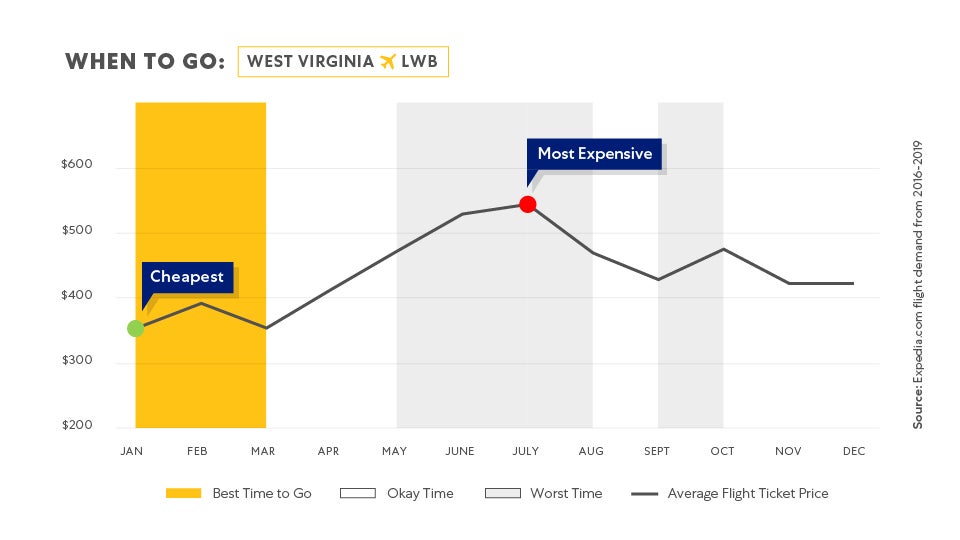
Before You Go
Watch: The Wild Ones, a series made by filmmaker Logan Bockrath and the outfitter Adventures on the Gorge, features people who left the comfort of more traditional paths for the unknowns of river life. In this installment, you’ll meet Joe Catalano, who started rafting down West Virginia’s New River as a kid. He knew even then that this was something he wanted to do for the rest of his life.
Detour: From via ferrata routes and wild whitewater to mellow hikes and lush farms, here are five road trips that make the most out of the Mountain State.
Sweden: Cabin Heaven
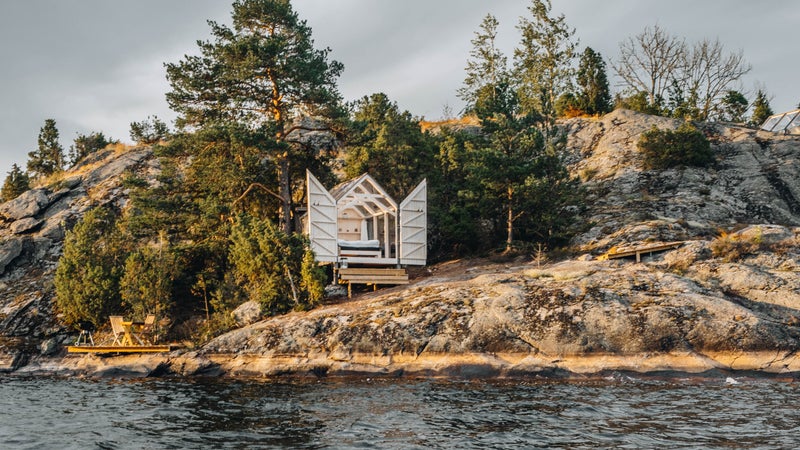
Sweden’s approach to the pandemic was controversial, to say the least, and resulted in outsized impact compared to its Scandinavian neighbors that did impose lockdowns. As of September, though, the country has one of Europe’s lowest death rates. Could the country’s focus on the outdoors and healing properties of nature have something to do with it? In 2017, five stressed-out people, including a French taxi driver, a German police officer, and a British broadcaster, spent 72 hours on a private island in the middle of Lake Animmen, in southwestern Sweden, residing in glass cabins. Built on stilts, large enough for a bed, and surrounded by fresh water, trees, and stars, the stunning cabins had an impressive effect on the visitors. After three days, all five showed a measurable decrease in systolic blood pressure, a drop in heart rate, and an increase in creativity and feelings of well-being. The experiment was such a success that there are now nine 72 Hour Cabins in Dalsland province that anyone can book to swim, fish, paddle a canoe, hike, take a sauna, or do as the Swedes do and just be in nature (from $697 per person for three days, including meals). —Stephanie Pearson
When to Visit
Make the most of the sunshine and visit the Dalsland province from May to September, when you can enjoy temperatures between 50 and 65 degrees. It’s always a good idea to pack layers for Sweden’s unpredictable weather.
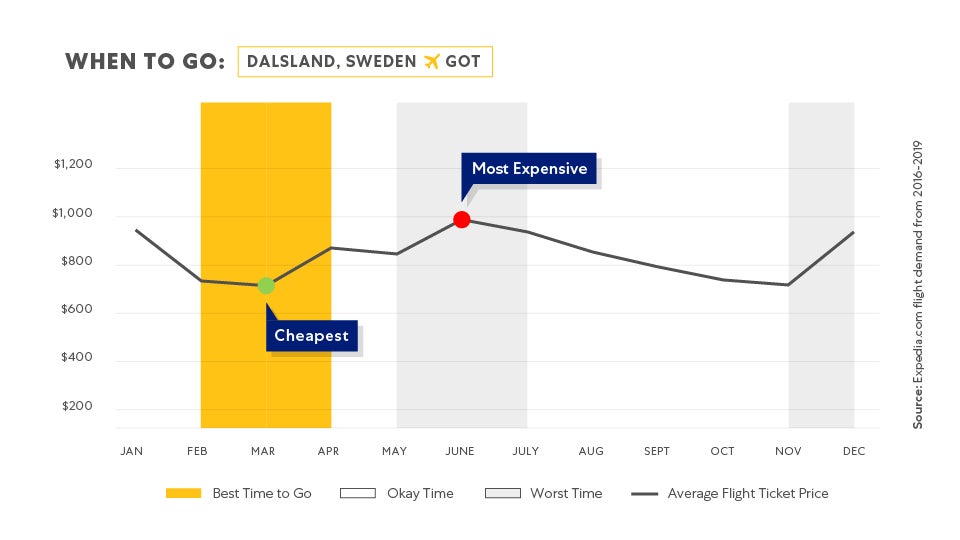
Before You Go
Read: Starting with a single Alaskan husky named Derby, Kenth Fjellborg built a dogsled-touring empire that attracts 5,000 would-be mushers a year to a frozen patch of tundra in Poikkijarvi, Sweden, 100 miles north of the Arctic Circle. And, according to contributing editor Stephanie Pearson, he’s not afraid to yell at you using foul language.
Watch: English adventurer Alastair Humphreys and the crew at Studiocanoe took a five-day float down Sweden’s Klaralven River on a DIY raft.
Detour: For an Arctic hit, head to Niehku Mountain Villa in Swedish Lapland, a three-and-a-half-hour flight from Dalsland’s nearest airport in Göteborg, to hike, fish, and ski Europe’s last stretch of wilderness.
Colorado: Go with a Legend

Steve “Doom” Fassbinder is known for completing nearly impossible adventures, like biking and rafting 1,000 miles across Tajikistan. The guy has an uncanny ability to suffer—early in his career, he was a repeat 24-Hour mountain-bike-racing world champ. Since leaving the racing scene, Doom has made a name for himself by piecing together creative multi-day routes around the world that require mountain bikes, pack rafts, and the occasional llama. Now his distinctive style of adventure is available stateside with his new outfitter, Four Corners Guides, which takes clients through the deserts, canyons, and rivers of southwest Colorado. The customized tours launch from Fassbinder’s 35-acre Scullbinder Ranch, which has canvas glamping tents and its own mountain-bike trail system and pump track.
One of the trips includes special access to nearby Ute Mountain Ute Tribal Park, 125,000 acres of protected lands adjacent to popular Mesa Verde National Park, with a fraction of the visitors. You’ll bikepack for three days through the park’s dusty canyons, fording the Mancos River to meet Wolf, a Ute Mountain Ute guide who’ll take you up wooden ladders into Native cliff dwellings. The tour finishes with a 40-mile gravel grind back to the ranch, hitting tiny downtown Mancos, where a craft beer on the outdoor patio at Mancos Brewing Company awaits. Because what’s a bike ride without a post-ride beer? From $895 —G.A.
When to Visit
The dry climate of southwest Colorado makes it an ideal spot for outdoor recreation from late spring to early fall. If you want to avoid the crowds, late fall is your best bet.

Before You Go
Read: Still not sold on Fassbinder’s cred? This profile should settle that.
Detour: Want to shave down your PR? Tack on an extra day or two in nearby Mancos, which made our list of the top-ten towns for high-altitude running.
Pakistan: A New Trek to K2
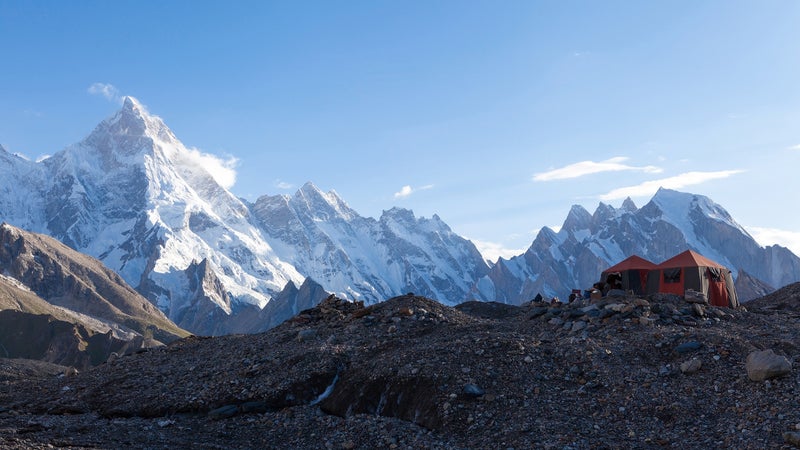
If the Lifetime Achievement Award of Adventure Travel were a thing, World Expeditions would be a strong contender. The Sydney-based outfit started in 1975 and quickly accrued a litany of world firsts—first commercial cycling trips in China, first commercial descent of Tasmania’s Franklin River, first group treks in Mongolia. Along the way, it developed a knack for edgy destinations, among them Pakistan’s Karakoram Range, where the highlight was the literally breathtaking ascent to K2’s 16,500-foot base camp. Then sectarian violence rocked the country and tourism all but vanished.
Now, nine years after pulling out, and with security vastly improved, World Expeditions is back with a 25-day itinerary to base camp ($6,390). You’ll be guided by Australian mountaineer Andrew Lock and camp under peaks like Masherbrum and Trango Tower. —Tim Neville
When to Visit
World Expeditions offers trips in June and July, when temperatures range from 85 degrees to 32 degrees at higher altitudes.
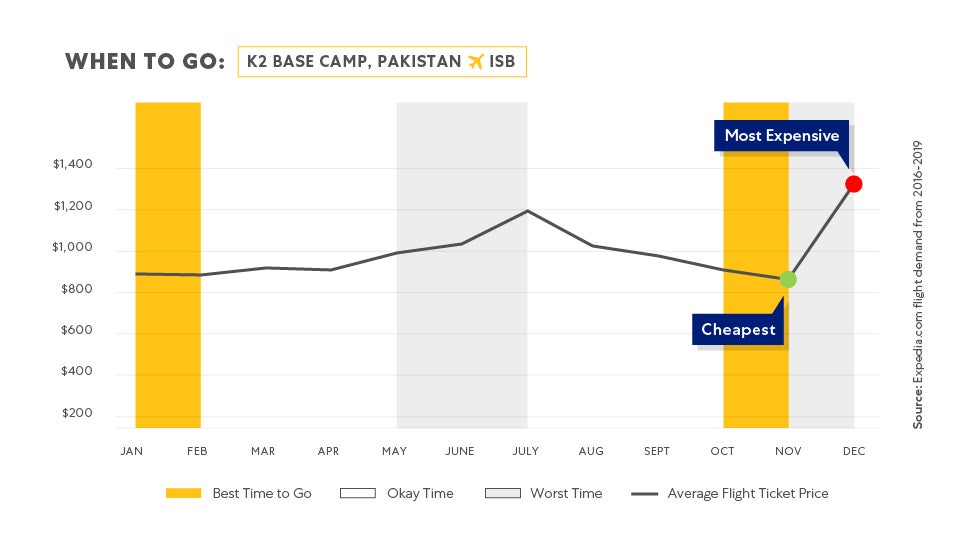
Before You Go
Read: High in the Karakoram, the stubborn armies of India and Pakistan faced off for 19 years on the Siachen Glacier, the world’s highest battleground and a flash point in the deadly dispute over Kashmir. In this exclusive report, contributing editor Kevin Fedarko spent two months inside the ultimate no-man’s-land, witnessing the devastating conflict.
Arizona: A Cyclist’s Dream
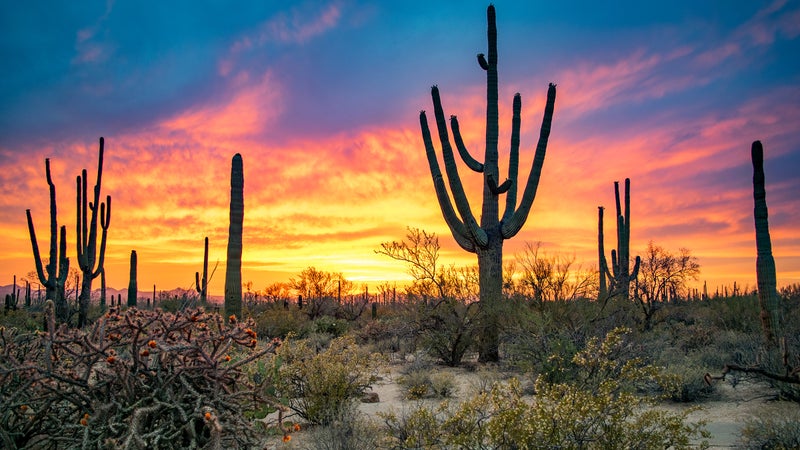
While its better-known California cousin Joshua Tree attracts three million visitors a year, Saguaro National Park, divided by Tucson, sees barely a million and is a biker’s paradise. From downtown Tucson, the 131-mile Loop gets you within two miles of the park. In winter, when temperatures hover in the mid-sixties, this region is a training ground for professional bikers. At the park’s eastern Rincon Mountain District, mountain bikers will find a section of singletrack that links to more than 800 miles of dirt riding along the Arizona Trail.
Overnight at the RV-friendly, 130-site Gilbert Ray Campground (from $10), or book a room at the Posada (from $185), a new five-suite inn from the couple behind Instagram sensation Joshua Tree House. Better yet, book a trip with Backroads, which recently launched Tucson’s Blue Sky and Saguaro National Park five-day tour ($2,699). It showcases the best riding in Rincon, with the option to tackle Mount Lemmon, a bucket-list climb that ascends 5,500 feet over 20.8 miles. —Jen Murphy
When to Visit
Temperatures are in the sixties from November to mid-May, making for perfect camping weather. Flight prices are less expensive in the summer (late May through September), but temperatures then can be blisteringly hot, with averages topping 100 degrees.

Before You Go
News: In December, writer Adam Skolnick traveled to Tucson to report on the ecological threat posed by the border wall, a 63-mile stretch in Border Patrol’s Tucson Sector that’s currently under construction.
Read: When writer Will Grant heard head-spinning tales of treasure from a legendary prospector named Flint Carter, he organized a full-scale expedition into the mountains near Tucson. Following a hand-drawn map, he lit out for the Sonoran Desert, hopped up on gold fever, in search of the fabled Lost City.
Detour: Mount Graham, two hours northeast of Tucson, isn’t somewhere you would happen upon by chance, but according to our cycling columnist Aaron Gulley, it’s worth the effort to get there.
Taiwan: A Mountain Mecca
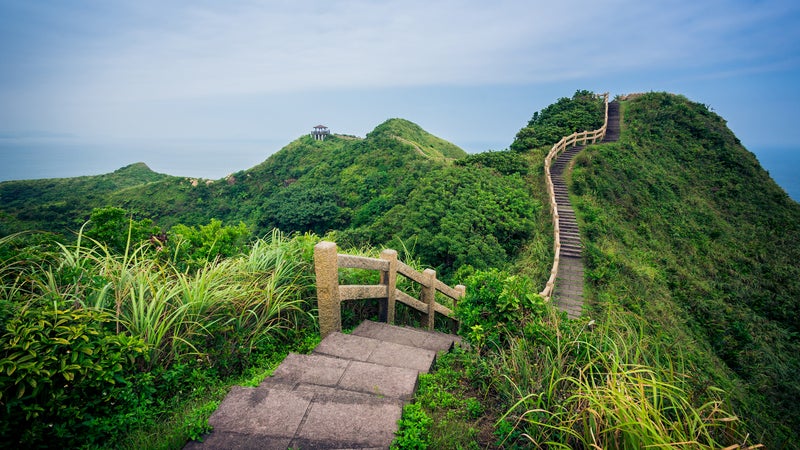
As Asian nations go, this tiny, teardrop-shaped island off mainland China isn’t known for its mountains. But 70 percent of the country is covered with lush tropical peaks teeming with trails and hot springs. Taiwan’s compact size means that adventure is never more than two hours away by bullet train from any major city. Our recommendation? From Taipei, head for Taichung Valley to the new Hoshinoya Guguan, a tranquil, 50-room resort located along the Dajia River (from $573). It’s an ideal launch point to hike 12,966-foot Jade Mountain, the tallest peak in northeast Asia. Or try nearby Snow Mountain, with its razor-edged cliffs and hiking routes, including the Holy Ridge Trail, a 9.3-mile technical route up and down scree slopes to the 12,749-foot summit. —Devin Gordon
When to Visit
Taiwan’s weather is at its mildest from March to May, when temperatures hover between 70 and 80 degrees. If you want to hike Jade Mountain, late fall and early winter are the best windows so you can avoid summer’s typhoons and winter’s snow.
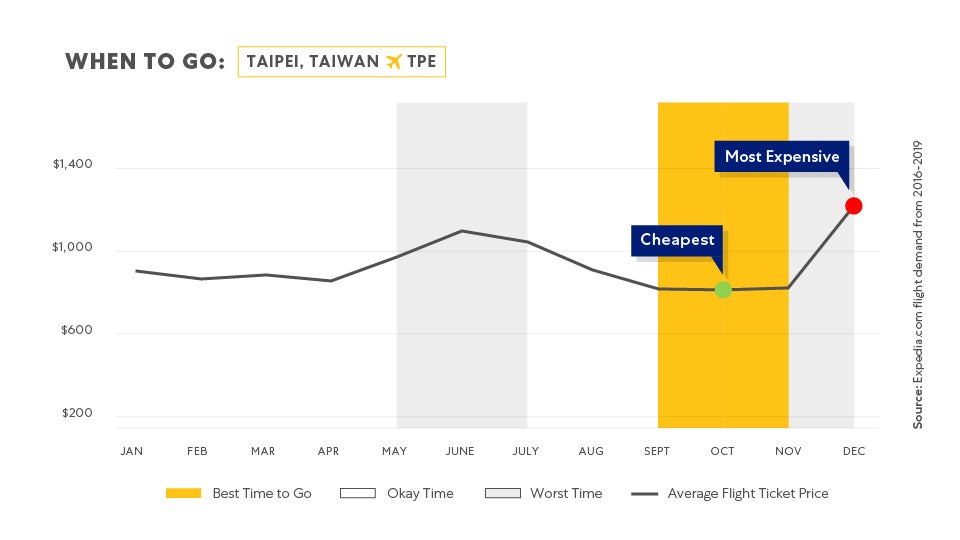
Before You Go
Read: Editor-at-large Grayson Schaffer reported on the lead-up to Alex Honnold’s 2014 free solo of Taipei 101, Taiwan’s 1,667-foot skyscraper, which ended up falling apart almost as quickly as it came together.
Puerto Rico: Always Under the Sun
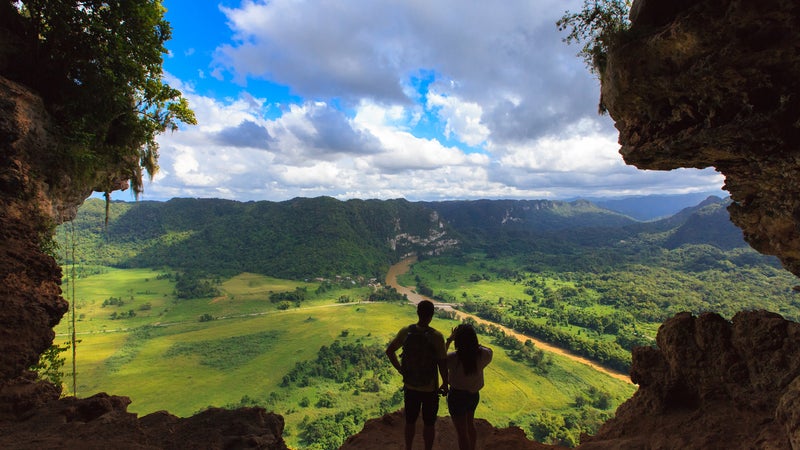
While Puerto Rico technically never closed its borders to U.S. travelers, the island was hit hard by COVID-19 and in response has redirected all flights to go through San Juan’s Luis Muñoz Marín International Airport, where passengers much show documentation of a negative test taken within 72 hours prior to arrival, and be subject to additional screening at the airport (those who don’t complete a test before must go to a certified testing site upon arrival, pay a fee, and quarantine until results are ready).
While most travelers usually head to the western town of Rincón, known for its beaches and excellent surf, the north coast is also packed with adventure. In Vega Baja, January’s hurricane cleared the vegetation covering once unnavigable mountain cliffs, allowing the outfitter 21 Climb and Tour to open the Roca Norte Outdoor Climbing Gym. In Arecibo, you can rappel 250 feet into Cueva del Arco and tube through 1,000 feet of cave systems along the Tanamá River. Nearby, 1,000-acre Cambalache State Forest has eight miles of hiking trails. The north coast is also home to spectacular beaches, especially Dorado, an emerging surfing hub. Splurge at the recently reopened Dorado Beach Ritz-Carlton Reserve (from $1,299), or check out the Parador El Buen Café (from $107), a family-owned property with 50 rustic rooms. —Kathleen Squires
When to Visit
The best weather is in winter, when temperatures are in the low eighties. Beat the crowds from mid-April to June. Avoid the fall hurricane season.
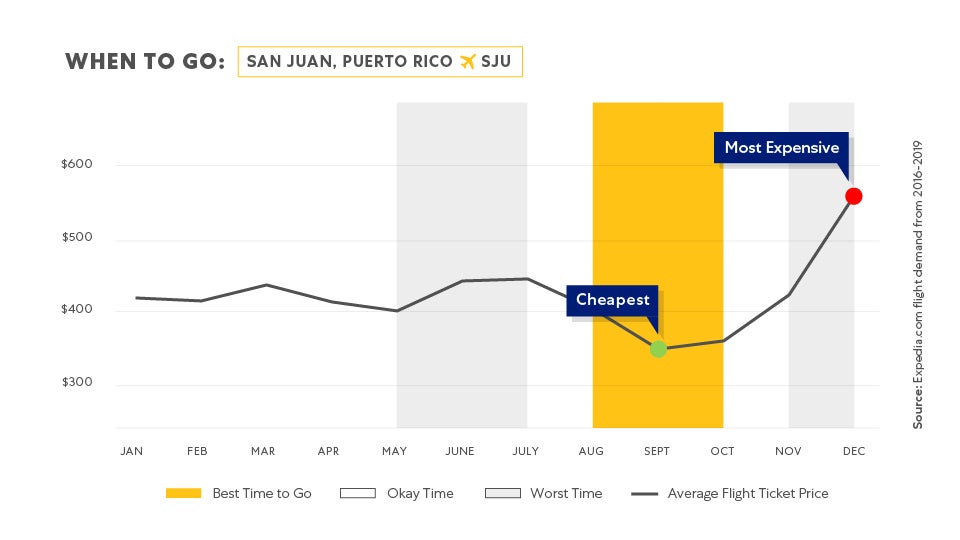
Before You Go
Read: Former pro surfer Jon Rose was chasing the biggest swells in Sumatra when the 2009 earthquake hit, and he spent the next few years providing clean water in remote disaster zones. In 2017, when Hurricane Maria struck, his nonprofit organization Waves for Water went to work.
Watch: Climbing Out of Disaster, from Black Diamond, follows Puerto Rican climber Bryant Huffman as he uses his outdoor skills to help others on the island recover from Hurricane Maria.
Detour: Culebra, an island 18 miles east of Puerto Rico’s mainland, made our list for tropical islands you can stay on for less than $100. It was unaffected by the recent earthquakes.
Nevada: Yes, There’s Heli-Skiing
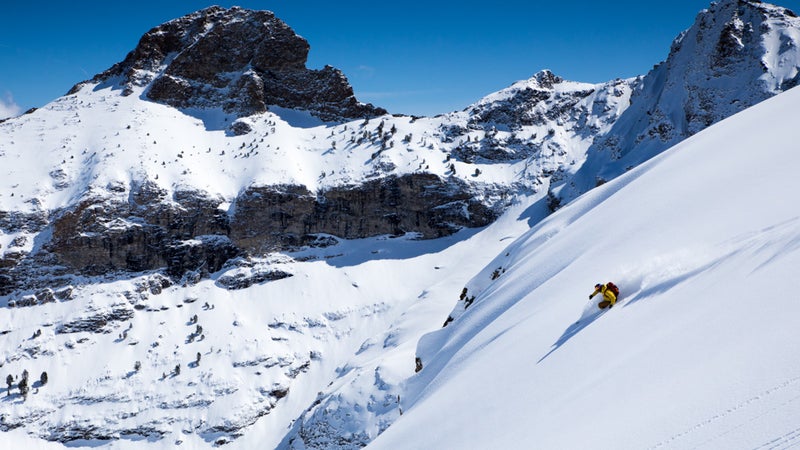
As the story goes, it was the 1970s, and a ski patroller from Snowbird, Utah, named Joe Royer would drive back and forth along Interstate 80 between Salt Lake City and his hometown of San Francisco. It was hard to miss the dramatic, toothy peaks that spike up in the middle of the Nevada desert just south of that route. The Ruby Mountains are a big range—90 miles long, 10 to 13 miles wide, with ten peaks that top out above 10,000 feet—but they fly totally under the radar. There’s no resort, but there’s plenty of snow.
So in 1977, Royer and two business partners opened Ruby Mountains Helicopter Experience, Nevada’s first heli-ski operation. For decades they stationed guests at a house they rented in the ranching town of Lamoille. But in 2015, they bought more than 1,000 acres on their 200,000-acre guiding tenure and started building a proper base camp. Named the Ruby 360 Lodge, the ten-bedroom homestead opened three years ago and offers winter access to some of the most remote, rugged ski terrain in the lower 48. The helipad is steps from the lodge, with the closest skiing a two-minute flight away. By day, ski off 11,000-foot peaks with narrow chutes, aspen groves, and wide-open bowls. By night, dine on chef-prepared meals and soak in the outdoor hot tub. From $1,655, including heli-skiing. —Megan Michelson
When to Visit
To make the most of your heli-skiing experience, head to the hills December through March. If you’re looking to do more than ski, time your trip for November or April, when temperatures range from 60 to 80 degrees.

Before You Go
Read: Nevada may be big and windswept, but don’t call it empty. Brad Wetzler’s adventure road trip through the Silver State turns up a secret-stash playground of backcountry splendor, high-end diversions, and a horizon that never stops beckoning.
Detour: Death Valley National Park, which straddles Nevada and central California, is one of the hottest, driest, and lowest places in the country. It’s also one of the most beautiful—a place where sculptural canyons, undulating sand dunes, abundant wildlife, and a luminous sky abound. Here’s our guide to it.
Japan, Three Ways
We’re watching to see if the Olympic Games will proceed with the rescheduled 2021 date. If you’re planning on attending or booking a separate trip, keep these adventure detours in mind. —Kassondra Cloos

Maruyama River, Toyooka
In the city of Toyooka, five hours west of Tokyo by train, the Japanese national rowing team trains on the Maruyama River. Rent a kayak from Maruyamagawa Park (from $4 per hour) to paddle it, or head four miles north to San’in Kaigan Geopark for a guided kayak tour through stunning rock formations with Mother Earth (from $64).
Southern Daisetsuzan Traverse, Hokkaido
There’s more to Japan’s northernmost island than skiing at Niseko. The region, a 90-minute flight from Tokyo, has plenty going on in summer, too. Tackle the Southern Daisetsuzan Traverse, a 22-mile path along a string of active volcanoes. Trek on your own, staying at campsites within Daisetsuzan National Park, or book a guide with Travel Hokkaido (from $387).
Michinoku Coastal Trail, Tohoku
In the mountainous Tohoku region, northeast of Tokyo, there’s the 637-mile Michinoku Coastal Trail. For a day hike, opt for the 7.7-mile Oku-Matsushima and Urato Islands Course. There you’ll find Matsushima Bay, which is filled with 260 small pine-covered islands.
When to Visit
July and August can be hot and muggy (85 to 90 degrees), perfect weather for a paddle down the Maruyama River. May, June, and October see the least amount of precipitation. Daisetsuzan National Park is open from July to the end of September; in July and August, temperatures are in the seventies. To hike the Michinoku Coastal Trail, tackle it from May to September, when daytime temperatures range between 70 and 80 degrees.
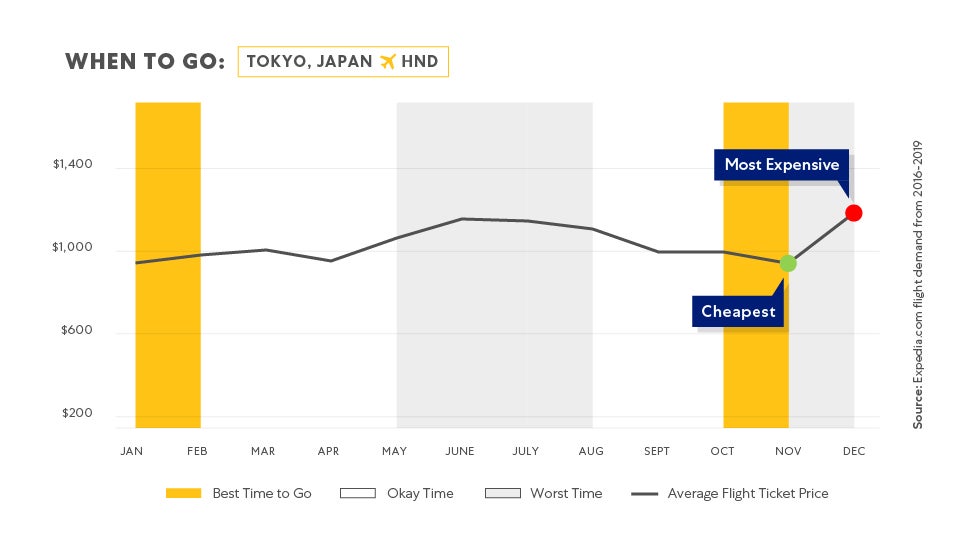
Before You Go
News: Due to coronavirus concerns, the Tokyo Marathon, held on March 1, only allowed elite athletes to compete, as health columnist Martin Fritz Huber reports. Outside continues to closely monitor the status of the Summer Olympics.
Read: Before most of us had even heard of forest bathing, contributing editor Florence Williams traveled deep into the woods of Japan, where researchers were starting to back up the theory that nature could lower your blood pressure, fight off depression, and even prevent cancer.
Watch: Skier Mary McIntyre had her eye on the Japanese island volcano of Rishiri, not far from the country’s epicenter of powder skiing in Hokkaido, for several years. Rishiri, due east of Russia, is exposed to howling winds and severe storms. In The Floating Mountain, from Black Diamond and filmmaker Eliel Hindert, McIntyre and fellow skier Parkin Costain spent two weeks attempting a summit bid and scoring deep turns.
New Zealand: The Gravel-Grinding Island
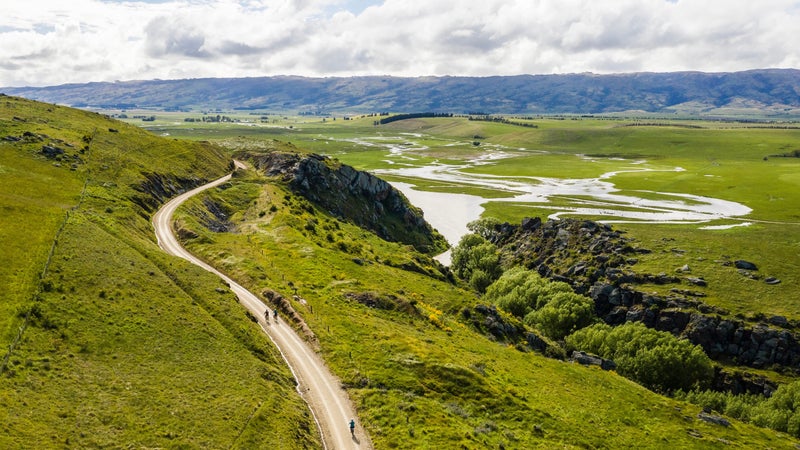
It’s no surprise that New Zealand fared so well after its fast and effective response to the pandemic. In May, the country showed the travel industry even more hope when it announced its plan to create the first “travel bubble” with Australia (though that plan has been on hold after an outbreak in the Australian state of Victoria in August). It may be awhile until the country opens up, but you’ll need some time to plan this bucket-list trip anyway.
Among cyclists, the South Island of New Zealand needs no introduction. But sharing the country’s narrow-shoulder roads with traffic can get dangerous, so New Zealand resident Phil Wyndham, who oversees a “mad keen” team of bikers at outfitter Adventure South NZ, dove into a simple question: How could they ride to their favorite backcountry locations while limiting exposure to cars? The answer: old gravel roads. “We knew they existed,” says Wyndham. “We just needed to link them up with some of our favorite spots to stay or eat and drink.” So he launched the first fully supported, multi-day gravel excursion on the island: Adventure South’s eight-day, inn-to-inn romp from Christchurch to Queenstown.
Expect to spin up to 55 miles a day, cruising along rugged inlets, past award-winning vineyards, and into soaring alps. Along the way, you’ll granny-gear it up Danseys Pass through the 5,000-foot Kakanui Mountains, soak in hot springs, and tuck along portions of the Alps 2 Ocean Trail, a dedicated bike path from Mount Cook to the Pacific. Day seven includes nearly 6,000 vertical feet of climbing over 45 miles up and down Duffers Saddle, the highest public road in the country. You’ll fuel up at classic Kiwi pubs and stay in places like Dunstan House, a 1900s stagecoach stop in Clyde, where you can sample velvety pinot noirs from Clyde Village Vineyard before catching a ferry across Lake Wakatipu to Queenstown. From $2,575. —T.N.
When to Visit
With generally nice weather year-round, the South Island hits its stride in the spring (from September to November), when the snow begins to melt and temperatures average around 65 degrees, and in the fall (from March to May), when temperatures drop to the low sixties, leaves begin to change, and there are fewer tourists.

Before You Go
Read: The stunning Paparoa Track, which opened in late 2019, is the country’s first new Great Walk to be built in 25 years. Jessica Lockhart scored a coveted spot on its opening day.
Watch: New Zealand is a car-camper’s paradise, making it the ideal shooting grounds for vanlifer and photographer Louis Charles Pilon.
Detour: The South Island is undoubtedly one of the world’s most beautiful places, where golden beaches and dense rainforests border the snowcapped Southern Alps and adventures are endless. Here’s our definitive guide on how to make the most of your time there.
Rwanda: Beyond Gorillas
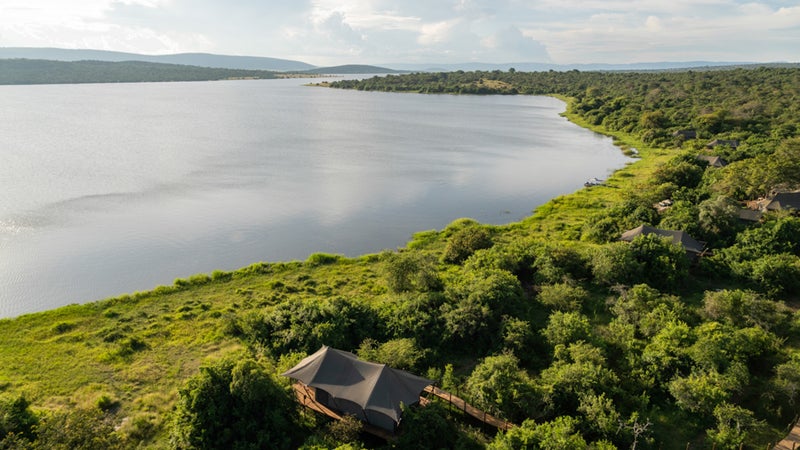
Central Africa’s mountain gorilla success story—the population increased from 786 to 1,000 over the past decade—will always be a major draw. But there’s much more to the region than communing with hairy apes. Rwanda has three national parks, including Akagera, where you can track the Big Five. On the border of Tanzania in northeastern Rwanda, the 433-square-mile park is Central Africa’s largest protected wetland and boasts more than 520 species of birds. And years of conservation efforts have restored its populations of elephants, lions, black rhinos, and leopards.
Set to reopen to international visitors at the end of September after Rwanda opened its borders to all in August (including Americans), Wilderness Safaris’ new solar-powered Magashi Camp (from $470) is an intimate way to experience Akagera; six tents surround a beautiful lodge on the lush shoreline of Lake Rwanyakazinga, which has one of Africa’s highest hippo densities. The country’s fourth national park, Gishwati Mukura, is due to open to tourists this spring between Volcanoes and Nyungwe National Parks to create a thriving wildlife corridor. On your way out of the country, spend a day or two in the vibrant capital city of Kigali at the art galleries, coffee shops, and bars that now line its streets. Be sure to visit the gut-wrenching Kigali Genocide Memorial, the final resting place for more than 250,000 victims of the conflict, which happened 26 years ago. —S.P.
When to Visit
June to mid-September is the dry season and the best and most popular time to visit Akagera National Park. The weather is pretty warm year-round, though, hovering at around 75 degrees.
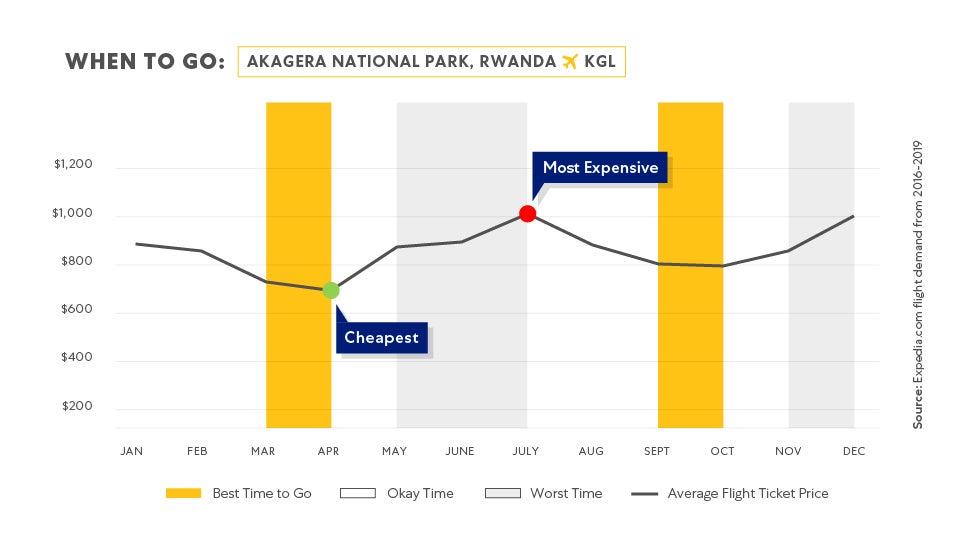
Before You Go
Read: Almost 15 years after the country’s genocide, writer Jason Gay traveled to Rwanda to see what was behind its sudden rise as an adventure destination and how it became the darling of multinational investors.
Utah: A Climbing and Biking Hub

Most visitors consider Saint George a pit stop on the way to Zion National Park. But the town is coming into its own as an adventure hot spot. The riding is similar to Moab, but with more variety, from slickrock paths to high-alpine singletrack. There’s plenty of flow, too. In Bloomington, five miles southwest of downtown, the Bearclaw Poppy Trail offers easy routes with optional drops, while the Barrel Trail, in Green Valley, has huge features.
Drive an hour northeast to the Brian Head Resort, which spent two years turning the mountain into a world-class lift-served playground. When your legs need a rest, there’s year-round climbing within an hour of town. Skip the Zion crowds and head 90 minutes southwest to Lime Kiln Canyon, a 350-foot-high cliff offering multi-pitch sport routes. Stay at the new 60-room Advenire downtown (from $209), or try Gooseberry Lodges (from $50), 30 miles east. Each of the 12 cabins comes with a mechanic’s stand. —G.A.
When to Visit
April, May, September, and October are some of the best months to explore this area, when temperatures peak at about 70 degrees. Winter is also nice—just pack some extra layers—and you’ll miss the crowds by visiting in the off-season.
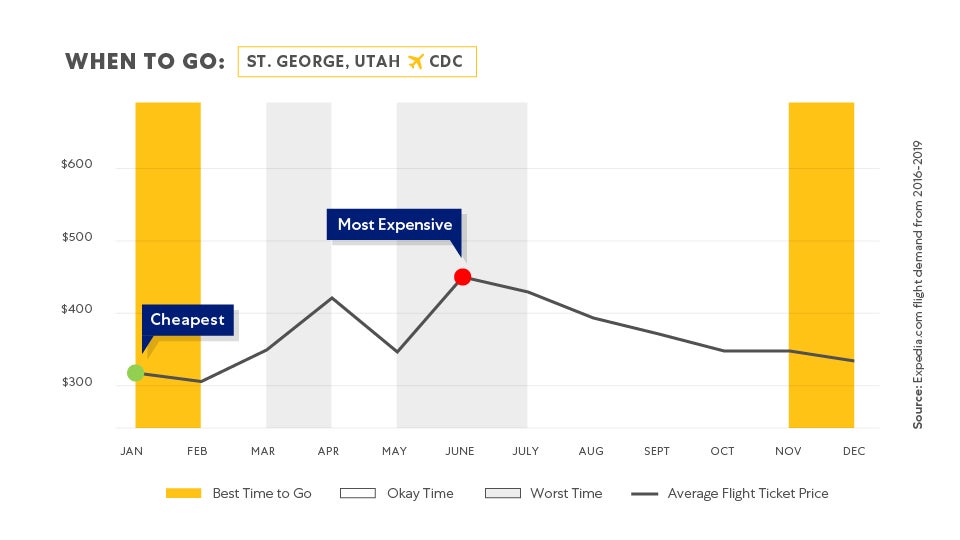
Before You Go
Read: In 2017, the Trump administration announced that it was shrinking the iconic Utah national monument of Grand Staircase–Escalante by nearly 50 percent. Writer Leath Tonino devised a 200-mile solo desert trek, following the path of the legendary cartographer who literally put these contentious canyons on the map.
Detour: If you’re interested in seeing Zion, here’s our ultimate guide to the national park. If you want to visit Moab, we’ve got a guide for that, too.
The Azores: A Vast Adventure Playground
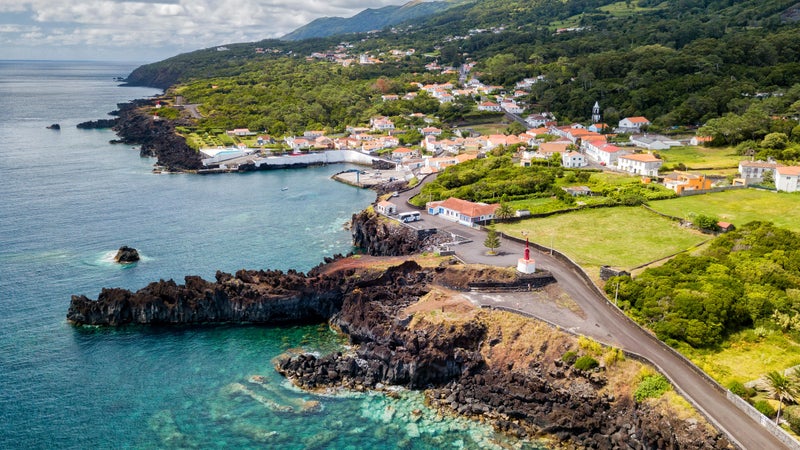
It’s perplexing that the Azores, an archipelago 900 miles west of Lisbon, aren’t better known. The islands are surprisingly accessible—a less than five-hour flight from Boston. And they feel like the love child of Hawaii and New Zealand, with cascading waterfalls, pounding surf, and emerald cliffs. Each island has its own draw—Pico for diving, São Jorge for surfing, Flores for hiking. But São Miguel, the largest island, is a one-stop shop for a multi-adventure trip. Year-round breaks, like the perfect swells at Praia de Santa Bárbara, attract surfers looking to avoid mainland Portugal’s crowds. Near the southern town of Vila Franca do Campo, a submerged volcanic islet makes for great snorkeling. Ten minutes northwest is Lagoa do Fogo, a crater lake reached via a 6.8-mile hike. Or check out the views from a technical two-mile bike trail called Cathedral. Don’t miss the hot springs of Furnas half an hour east. Stay at the 12-suite Sul Villas and Spa (from $134), owned by local surfer Rodrigo Herédia. —J.M.
When to Visit
There isn’t a bad time to go to the Azores, with temperatures ranging from 60 to 77 degrees year-round. The winter months, from November to January, see the most rainfall.
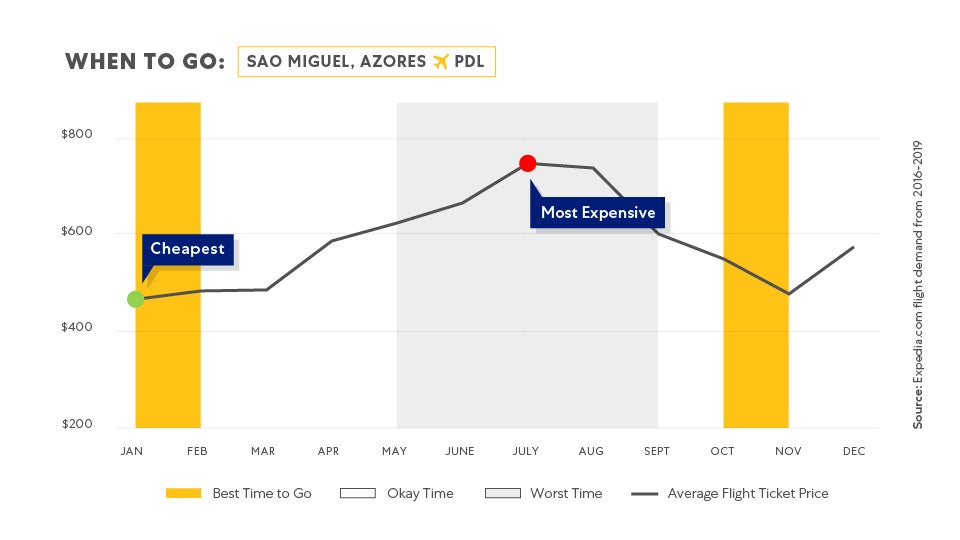
Before You Go
Read: At a time when most of its visitors were intrepid sailors, Paul Bennett island-hopped the archipelago in his 38-foot ketch.
Detour: Despite its remoteness, the Azores are a surprisingly low-cost destination, which is why they made our list of 20 Affordable Trips to Take Around the World in 2020.
Greenland: The Great Wide Open

Greenlanders will proudly tell you that their 836,000-square-mile country is not for sale. They do, however, welcome visitors to their wild Arctic frontier, marked by 11,000-foot peaks, polar bears, and Jakobshavn, the planet’s fastest-moving glacier. Roughly one-third of Greenland’s 55,990 residents live in the western capital of Nuuk, which means there’s a lot of empty space to explore. Big Mountain Bike Adventures launched a seven-day, 73-mile summer bikepacking trip on the Ilulissat ice fjord along the island’s western edge ($4,354).
For a less strenuous trip, stay at the new Erfalik Lodge, south of the town of Sisimiut (three-day minimum; prices vary with activity). The Scandinavian-style property sits on the bank of the Erfalik River, one of the world’s best Arctic char fisheries. Summer is for fishing; fall and winter are for hiking the tundra in search of caribou and the northern lights; and winter is for heli-skiing the surrounding peaks. —S.P.
When to Visit
The summer months (with an average temperature of 50 degrees) and winter (13 degrees) in Greenland offer visitors the most to see and do, including experiencing the midnight sun in the summer and the polar night in the winter. There are fewer tourists in the winter, though it’s still a popular season. Due to low volume, Expedia doesn’t have enough data on flights into Greenland at this time.
Before You Go
Read: We promise you’ll laugh and cry while reading this story by correspondent Wells Tower about a trip to Greenland with his father.
Detour: There are mountains in Greenland for which virtually no climbing information exists. Chris Brinlee Jr. packed up a sea kayak and flew there to find unclimbed alpine routes.
Tennessee: Your Own Private Park

Blackberry Farm resort in Walland, Tennessee, set the standard for upscale southern hospitality when the Beall family opened it to overnight guests in the seventies. They recently started taking on adventure with Blackberry Mountain, a 5,200-acre property next to Great Smoky Mountains National Park that opened last February. Half the property is set aside in a conservation easement, protecting eight miles of ridgeline and offering guests hiking, mountain biking, and rock climbing, and earning it the reputation of feeling like a private national park. You can stay in a multiroom home, a stone cottage, or one of six Watchman Cabins atop the mountain (from $1,045).
Start off with an early hike to the property’s new restaurant in a restored fire tower for a sunrise view of the surrounding forest and an egg bowl of wilted greens and sweet potato hash. Blackberry Mountain’s guides will lead you to various hidden treasures on the property, whether it’s a flowy piece of singletrack or a sculpture by renowned Danish artist Thomas Dambo nestled off a hiking trail. Set aside a day to pedal 33-mile-long Foothills Parkway, a recently finished two-lane blacktop six miles south of the resort with long-range views into the Smokies. The hotel can arrange for carbon-fiber road bikes. Just be sure you make it back for a cocktail—the Mountain over Manhattan, a rye and rosemary-syrup concoction, uses spices foraged locally. —G.A.
When to Visit
Anytime from April through October is pleasant. Summer temperatures average around 85 degrees.

Before You Go
Read: In 2018, we sent associate gear editor Ariella Ginztler to get inside the mind of the man behind the Barkley Marathons, one of the hardest ultramarathon races in the world, held every year in Frozen Head State Park near Wartburg, Tennessee.
Watch: Wonder in the Smokies, created by filmmaker Drew Perlmutter, chronicles the history of Elkmont, Tennessee, a ghost town situated next to Great Smoky Mountains National Park’s largest campground.
Detour: You can’t go to Tennessee and not see Great Smoky Mountains National Park. Here’s our definitive guide on how to make the most of a visit.
Guatemala: Coffee, Volcanoes, and Ruins
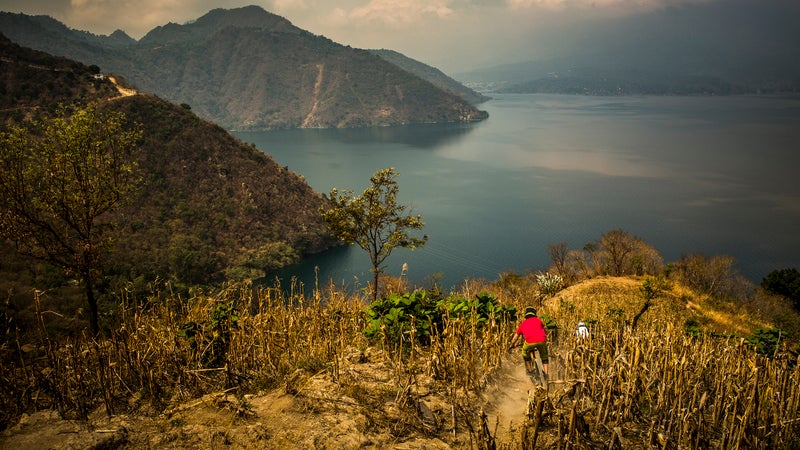
It’s now possible to bike or hike between the 16th-century colonial city of Antigua and the volcano-ringed Lake Atitlán, 50 miles to the west. Old Town Outfitters has been operating cycling tours in Guatemala for more than 20 years and cherry-picked the best backcountry riding for a challenging new three-day itinerary full of steep climbs and technical singletrack (from $455). The payoff is riding above the Maya ruins of Iximché, unsung views of Lake Atitlán and surrounding volcanoes, and stays at out-of-the-way inns, like an old flour mill turned luxury B&B.
Prefer to be on foot? The owners of Trek Guatemala spent two years researching a hiking route between Antigua and Lake Atitlán, meeting with locals to share their vision and ask permission for access. The result is a four-day trek (from $796) averaging seven to nine miles a day through thick tropical forests, coffee fincas, and Maya villages. Along the way, you’ll visit a women’s weaving cooperative, learn how to make tortillas, and hunker down at beautiful glamping sites, one of which has front-row views of Fuego, a very active volcano. While some Caribbean and Central American countries have begun accepting American travelers, Guatemala’s borders remain closed, so save this one for later. —S.P.
When to Visit
Guatemala is a year-round destination, with temperatures ranging from 75 to 80 degrees. Avoid the rainy season by traveling December through March.

Before You Go
View: These photographs by Max Whittaker will make you want to tour Guatemala by bike.
Detours: Stephanie Pearson endures a few mishaps on a trip along La Ruta Maya, a route through Central America’s Maya heartland, with memorable stops in Guatemala’s El Remate, Finca Ixobel, and Lake Atitlán.
Kenya: The Ultimate Safari
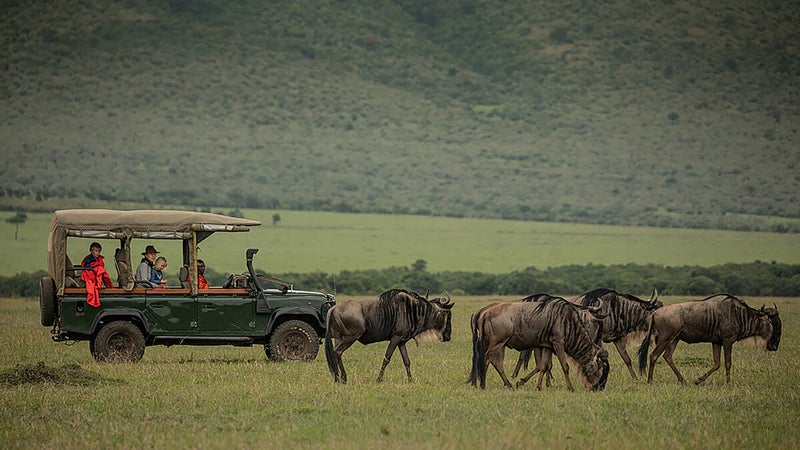
Kenya recently reopened to American travelers and our in-house travel experts Sandy and Chip Cunningham at Outside GO are returning with their popular safari itinerary. On the 11-day journey, you’ll stay at three family-run ranches that have made huge progress in conservation-based tourism. The trip starts in Nairobi National Park, where rhinos, giraffes, and lions wander wide-open grass plains. Then it’s west to House in the Wild, a lodge on the edge of the Masai Mara, where guests can explore the Enonkishu Conservancy, a consortium of Masai communities. Next up is Ol Malo, a 5,000-acre sanctuary owned by the Francombe family. Here you’ll get to meet neighboring Samburu families and witness the impact the Francombes have had on wildlife conservation. The final stop is Lewa House, a cluster of cottages on the 61,000-acre Lewa Wildlife Conservancy. Populations of black rhinos, elephants, and the endangered Grevy’s zebra have all made dramatic comebacks here, and in 2018, the conservancy invested nearly $1.7 million in local education and community projects. From $9,285 —S.P.
When to Visit
Head to Kenya during one of its dry seasons—January to March or July to October—when temperatures hover around 70 degrees.

Before You Go
Watch: In January, Outside environmental columnist Heather Hansman reviewed When Lambs Become Lions, a documentary about elephant poaching in Kenya that follows three men—a poacher, an ivory trader, and a wildlife ranger—ensnared in the deadly industry. And on a trip to Kenya with safari guide Ninian Lowis, filmmaker Goh Iromoto created The Wonder to capture his sense of awe, restored by the country’s vast wildlife and landscapes.
Detour: Outside GO’s Sandy and Chip Cunningham lived and ran a camp in Africa for years, and their spectacular knowledge of the continent makes for epic trips for their clients. See the other safaris they offer here.
Guyana: The Land That Time Forgot

The spotlight has been on this English-speaking gem, one of six countries that make up the Guiana Shield, a biodiverse geological formation believed to be crucial for the planet’s survival. And leading up to its closure in March, Guyana was doing tourism right, deploying green initiatives and small-scale community involvement to preserve its natural resources and cultural heritage. In the south, new lodging has opened to accommodate adventure travelers, including the Wichabai Ranch, a family-run guest house (from $90) where visitors can go horseback riding with vaqueros (local cowboys), canoe a nearby river, and track wildlife. There are also small, locally owned lodges in the forests and at the edges of rivers. At Rewa (from $16), where you can stay in a hammock or a rustic cabin, anglers catch and release the world’s largest scaled freshwater fish, the arapaima. Be sure to explore the savannas and wetlands of the south-central Rupununi region, home to the Macushi people, who have been here for millennia. With a jungle smorgasbord to nosh, it’s a place where jaguars, green anacondas, giant otters, and bird-eating Goliath spiders thrive. —Norie Quintos
When to Go
The dry season in central Guyana and on its savanna is October to March, with temperatures around 80 degrees, though the region does experience some rain in December. If you’re headed to the coast, go in the springtime or midsummer to avoid the rainy seasons, which run from May to mid-July and mid-November to mid-January.
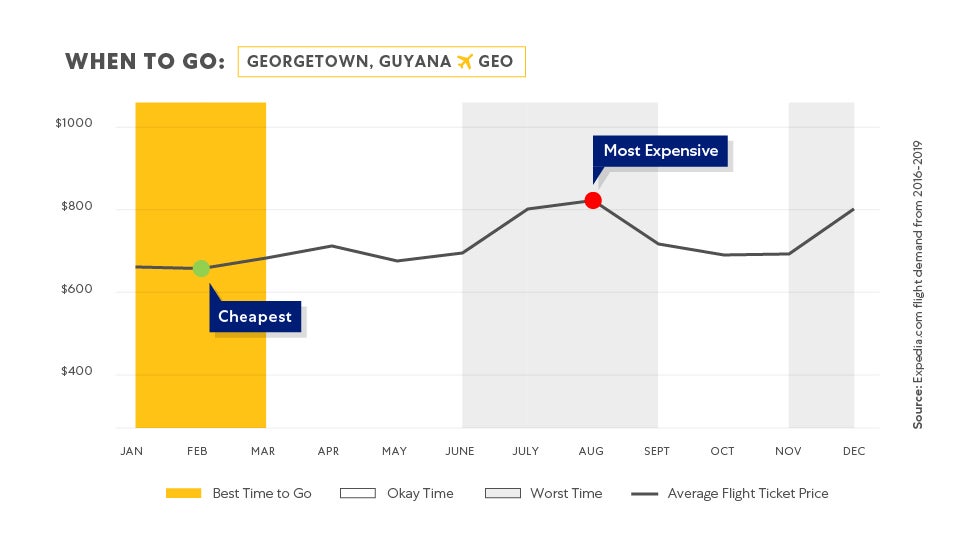
Before You Go
Read: Monkey-eating eagles, 19-foot-long anacondas, and spider-eating fish—conservation biologist Lesley de Souza has encountered almost all of Guyana’s unique biodiversity in her work to protect the country’s species and local communities.
Detour: East of Guyana sits the small country of Suriname, a hidden adventure paradise, according to The New York Times.
California: A New Preserve on the Central Coast
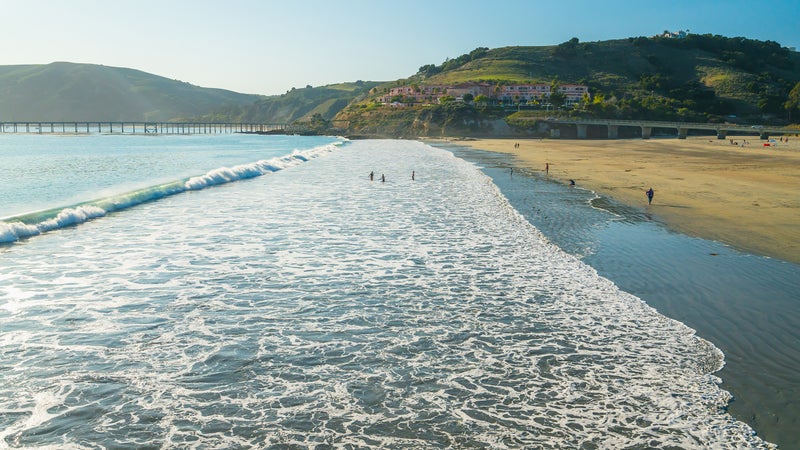
It’s no secret that San Luis Obispo is blessed with mountains and Pacific Ocean access. But things just got even better on California’s central coast with the opening of the Pismo Preserve, just off Highway 101. Closed to the public for decades as a private ranch, the 880-acre nature preserve has 11 miles of quality multi-use singletrack that traverses woodlands and coastal ridgelines, allowing the adventure hungry to spread out into new terrain. Stay in downtown SLO at the industrial-style Hotel Cerro (from $285) or at Hotel San Luis Obispo (from $300), which has a rooftop bar. —Kathryn Romeyn
When to Go
California is a perfect getaway nearly all year long. We recommend visiting the central coast from late June to late September, when sunny days are in full force.

Before You Go
Watch: Golden State Journey, from director KC Deane, producer Greg Jacobs, and the manufacturer Canyon Cycles, is a mountain-bike tour through the state’s high peaks, deserts, foothills, and rugged coastline.
View: The California Surf Project is a travel diary of two surfers who took the trip of a lifetime. Photographer Chris Burkard and professional surfer Eric Soderquist drove their Volkswagen bus along Highway 1 from the Oregon border to Tijuana, Mexico, to find some of the the state’s best breaks.
Detour: Check out this perfect Highway 1 road-trip itinerary.
Ecuador: Back to the Future
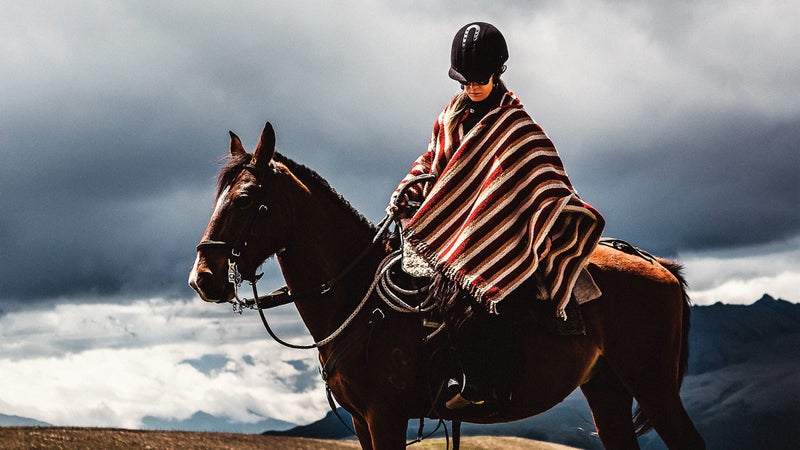
Jorge Pérez, the owner of Tierra del Volcán, a sustainable-travel company with lodges in Ecuador’s volcano country, has created a new trip for travelers to ponder their evolutionary path. Pérez’s Twenty-Five Seconds trip unfolds over 15 days from the Andes to the Galápagos Islands, and includes activities designed to spur travelers to think about where they came from and where they’re going. The journey begins in the Amazon inside the Cuyabeno Wildlife Reserve, a 2,330-square-mile swath of primordial jungle teeming with ten monkey species, tapirs, and pink dolphins. Here you’ll partner with indigenous people to harvest cassavas, fish for food, and communicate only with gestures. From there it’s off to the Galápagos to hike, snorkel, and contemplate the miracle of life. You’ll visit islands like Santa Cruz and Isabela and either camp on the beach or sleep on a sailboat. Finally, the future arrives in the Andes, at the ranch Hacienda El Porvenir, which translates as “the future,” where you’ll spend 24 hours venturing no more than 30 feet from a tent, alone, with a journal. From $4,989 —T.N.
When to Visit
January through May and October through December, the Galápagos Islands have the warmest temperatures (around 74 degrees) and the calmest waters.

Before You Go
Read: A guy calls and says he found some mysterious papers left behind by a dead relative who apparently shrunk human heads and bodies in the Ecuadorean Amazon. Do we wanna come see? Uh, no. But we knew writer Mary Roach would.
Watch: Created by kayaker and filmmaker Mike McKay, Jondachi tells the story of a young man and his connection to the Rio Jondachi in Ecuador. McKay was drawn to this region because of an impending dam project, but rather than focus on conservation alone, he explores a person’s spiritual connection to a resource.
Detour: Ecuador made our list of the destinations that will make your dollar go further this year.
New Mexico: The Howling Episodes

Two hours west of Albuquerque, you can spend time with wolves, some of them named by benefactor and New Mexico resident George R. R. Martin after his Game of Thrones characters. The Wild Spirit sanctuary is home to 65 wolves, wolf dogs, coyotes, Australian dingoes, and red foxes. Most were rescued from the exotic-animal trade. Visitors can book a feeding tour and watch the wolves get breakfast, and even pet and interact with the animals (prices vary with activity). Stay under wide-open skies at the sanctuary’s 15-site campground ($15), or book its cozy cabin ($125) or the lodge ($150). Add in a couple of days to explore the surrounding region. El Morro National Monument is 20 minutes away and home to some 2,000 carvings by Ancestral Puebloans and Spanish and American settlers. Hike the two-mile Headland Trail to the top of a bluff overlooking the Zuni Mountains and the volcanic craters of El Malpais National Monument. At El Malpais, explore one of many lava tubes, like the easy-to-access Junction Cave. Then visit nearby Zuni Pueblo for a tour, set to reopen in mid-September. —Anna Callaghan
When to Visit
Any time of year works. From April through October, temperatures generally range from 65 to 85 degrees.
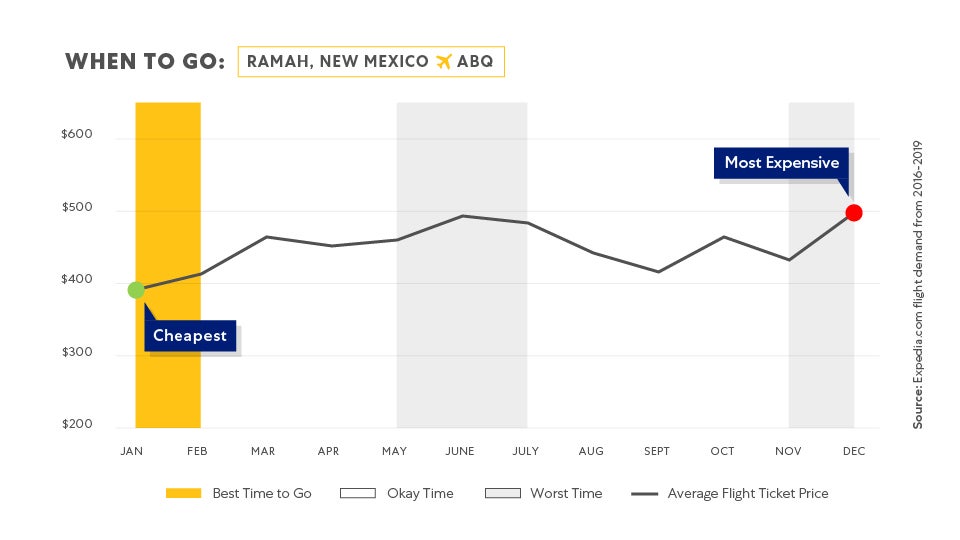
Before You Go
Detour: One of our favorite U.S. road trips is a 635-mile stretch from Carlsbad, New Mexico, up north to Buena Vista, Colorado. The town of Ramah makes for a perfect detour.
Read: Three hours south of Ramah is the Gila Wilderness, the first wilderness area in the U.S. and the source of one of America’s most endangered rivers, as environmental columnist Heather Hansman reports.
Morocco to Portugal: History on Two Wheels
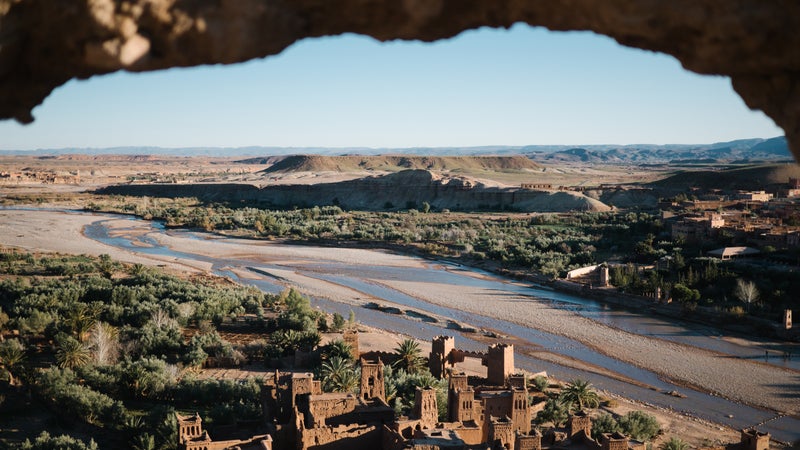
As an archeologist with a passion for Roman history, Sam Wood excavated his way around the Mediterranean. But that didn’t leave him much time to ride his bike. Then, in 2009, the BBC sent the Australian native to ride more than 2,200 miles from Spain to Italy for a documentary following in the footsteps of the conqueror Hannibal. Shortly after, Wood combined his two loves by founding Bike Odyssey, a touring company that explores history by bike. Sign up now for the 2021 Othello tour, named after Shakespeare’s tragic Moorish general. It begins in Marrakesh, Morocco (thought to be Othello’s homeland), then heads to Spain and Portugal. You’ll gasp for air spinning up Spain’s 11,148-foot Pico Veleta, but recover in places like a 15th-century convent in Évora, Portugal, which happens to serve some of the country’s best wines. From $7,378 for 14 nights —T.N.
When to Visit
Biking conditions are good anytime from April to October. Summers temperatures in Marrakech can reach 99 degrees. Mid-March to May or September through October, temperatures drop to around 75 degrees.
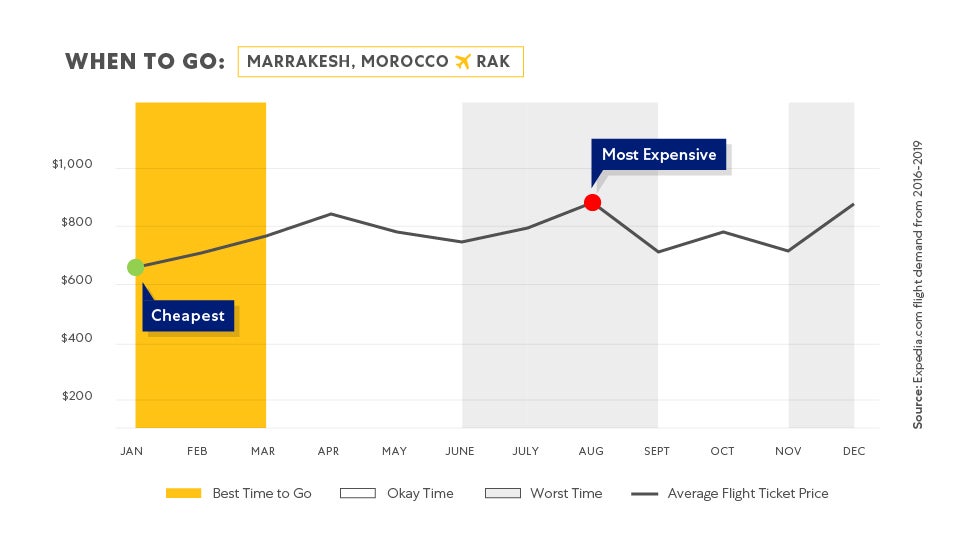
Before You Go
View: It might not have the name recognition of Hawaii’s North Shore or Australia’s Gold Coast, but Morocco’s Atlantic seaboard boasts some of the best surfing in the world. In 2017, when its annual Agadir Open welcomed women competitors for the first time in its history, former digital visuals editor Mary Mathis was there to capture the moment.
Detour: Surfing Morocco’s coast made our Best Trips list in 2019. (See number 33.)
Go the Distance: Three New Long Walks
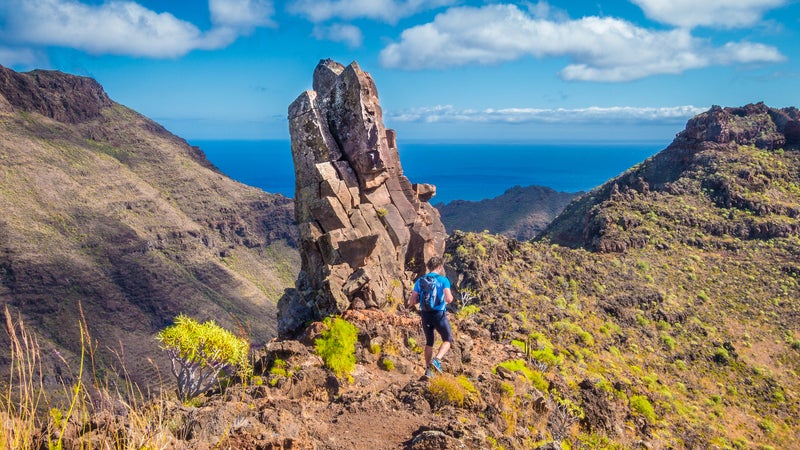
Canada’s Yukon Territory: 30 miles, 9 days
Tombstone Territorial Park in northwestern Canada is considered the Patagonia of the north due to its granite spires, massive peaks, and big game. A hike led by Great Canadian Trails will have you spotting grizzlies and caribou while trekking below peaks like 7,000-foot Mount Monolith. You’ll carry your own gear, but this isn’t a sufferfest. The daily distance is between three and seven miles. (From $1,999) —G.A.
When to Visit
The days are longer and warmer and the wildlife viewing is better from May to October in the Yukon. Summer months bring ideal hiking weather (60 degrees), though the fall’s cooler weather is generally still comfortable.
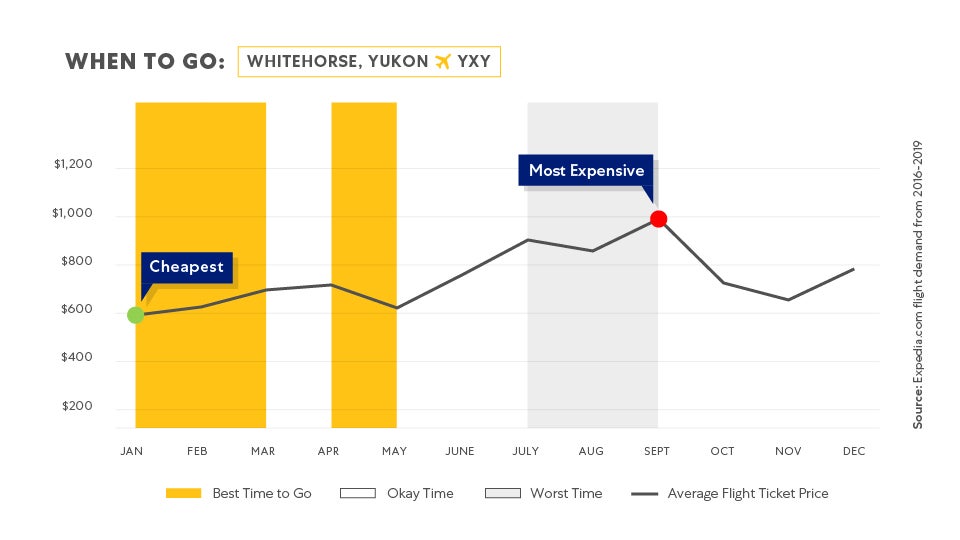
Before You Go
Read: Yukon-based correspondent Eva Holland writes about her experience racing in the 100-mile Yukon Arctic Ultra, one of the world’s most grueling ultramarathons, in this story for The Guardian.
Detour: First Nation mountain bikers are creating some of the world’s gnarliest trails. Stephanie Pearson finds the go-to spots for shredding singletrack.
Australia’s Northern Territory: 40 miles, 7 days
Many of the continent’s highlights are in the Northern Territory, an area left unscathed during last season’s wildfires. To hit them all, hike the Larapinta Trail along the West MacDonnell Ranges for 140 miles. Do the entire route in 12 days, camping in designated sites, or sign up for a seven-day, 40-mile trek with World Expeditions. (From $2,999) —G.A.
When to Visit
Plan your trip between April and September, when Australia’s winter days are 75 degrees and breezy, for the best hiking conditions on the trail. It’s not advised to hike it during the country’s summer months (from December to February), when high heat (90 degrees) and hot winds may increase the risk of heatstroke.

Before You Go
Read: In 2012, writer Matthew Power bounced around the Northern Territory in a 4×4 and discovered that there’s more to Australia’s interior than its harsh exterior.
Detour: We named the Red Center one of our 12 essential adventures in Australia and New Zealand.
The Canary Islands: 40 miles, 8 days
This Spanish-governed archipelago, a 2.5-hour flight southwest from Portugal, is a hiker’s playground, known for huge sand dunes, 6,400-foot peaks, and black-sand beaches. Most visitors stick to Tenerife, the largest island, but a new trek with outfitter CanariaWays explores lesser-known La Gomera. The eight-day trip hits the coast, rocky peaks, and banana plantations. Stay in a new village nearly every night, from sleepy mountain outposts to the bustling beach town of San Sebastián. (From $1,904) —G.A.
When to Visit
The islands have a mild climate nearly year-round, averaging 60 to 70 degrees. September through May, La Gomera is consistenly cooler and perfect for hiking.

Before You Go
Detour: Spend a night at Lanzarote, the fourth-largest island out of the archipelago’s eight, which made our list of tropical islands you can stay at for less than $100.
